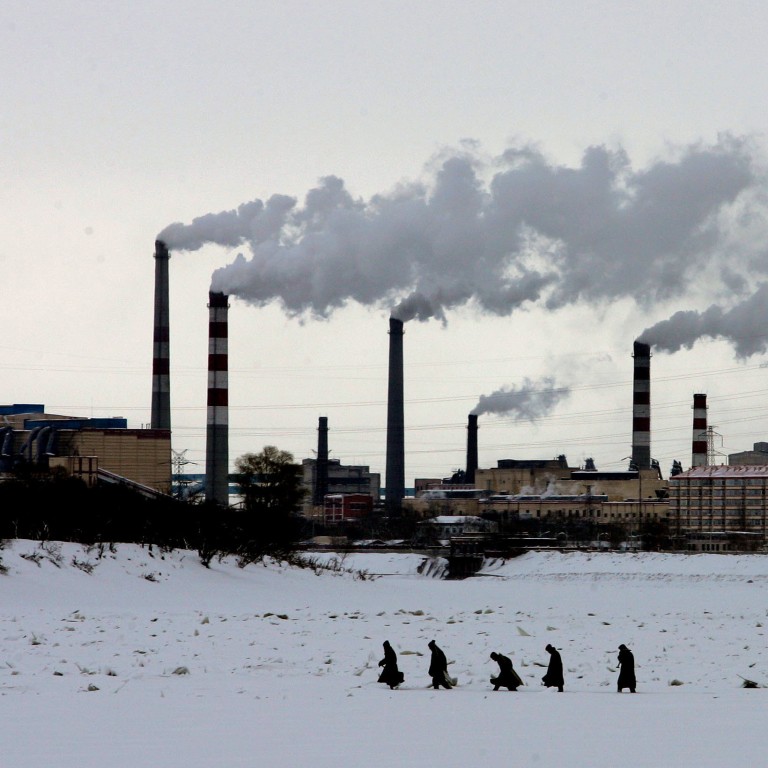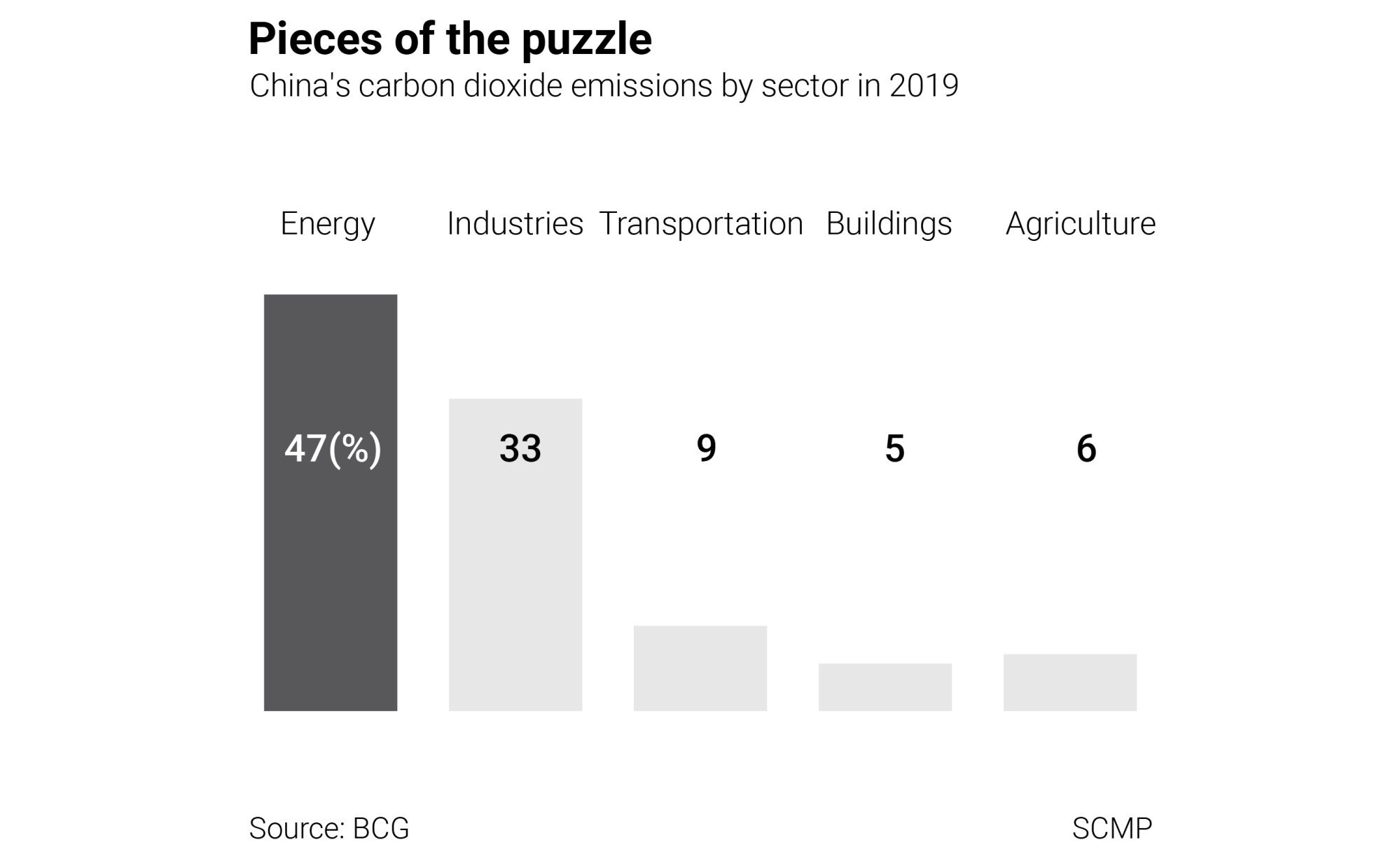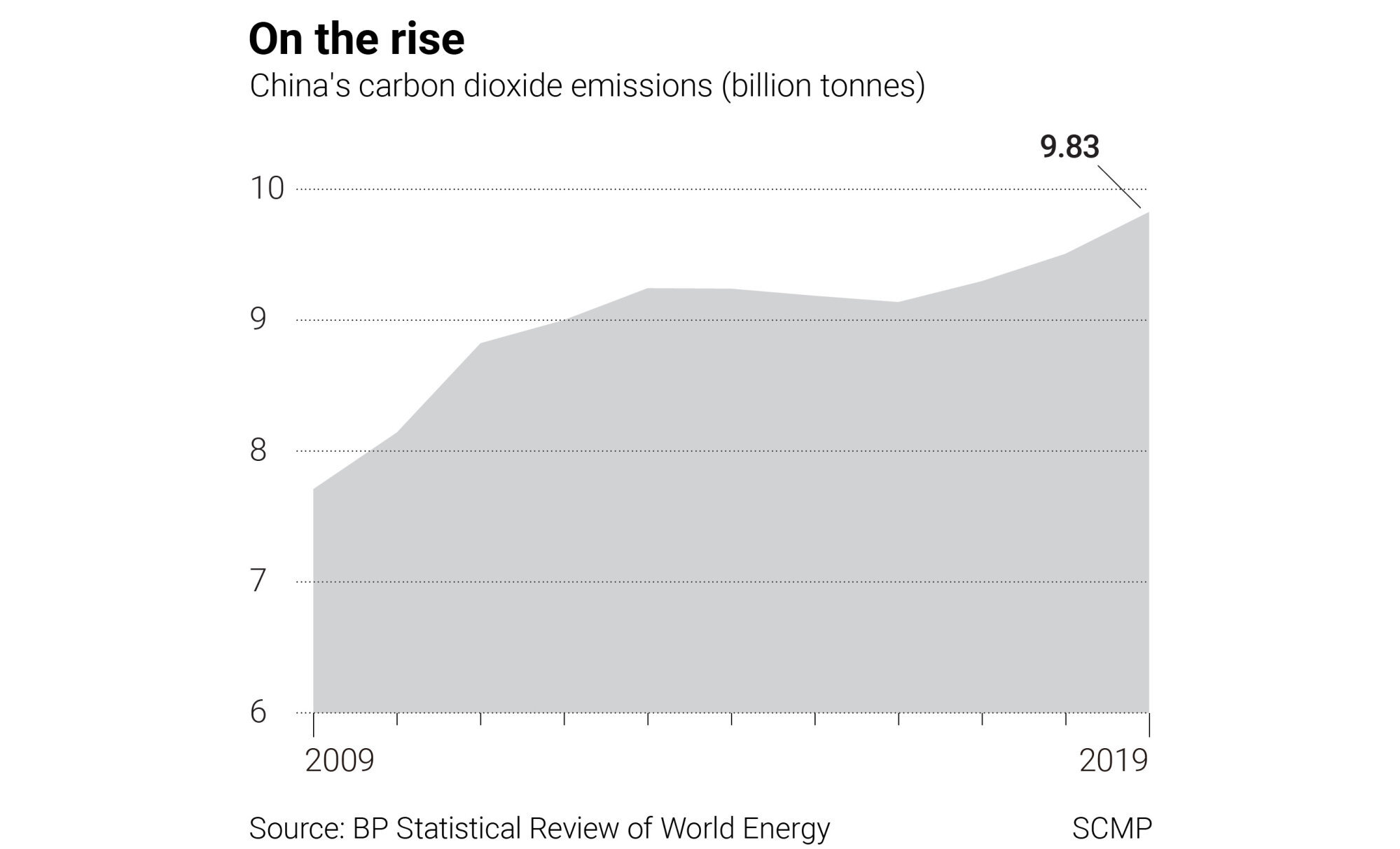
Guangzhou exchange kicks off, offering a hedge for carbon emissions trading in China’s 2060 climate change goal
- CSRC head will guide Guangzhou Futures Exchange to develop green products including carbon emission futures
- The scale of trading in the voluntary carbon offset market is currently around US$320 million, CME says
The exchange, officially opened on Monday by Yi Huiman, chairman of the China Securities Regulatory Commission (CSRC) in the Nansha district of the Guangdong provincial capital. The exchange is the fifth financial market place in China for trading futures.
“The CSRC will lead the Guangzhou Futures Exchange to develop products, systems, and innovative technology to establish a futures market that can serve the real economy and green development,” according to an article in the state-owned Guangzhou Daily newspaper, posted on the Guangzhou government’s website, adding that carbon emissions futures, climate-related products and commodities index futures would be considered.

“Carbon emission-related derivatives should be introduced so that risks can be fully reflected in the prices of trading carbon-emission products,” the Chinese central bank governor Yi Gang said during an April 15 webinar with the International Monetary Fund (IMF).

While many countries aim to cut carbon emissions, caps can be set for certain industries, allowing companies that release less carbon dioxide to sell their excess credits to companies that are still exceeding their limits. A nationwide, certified and regulated trading platform allows companies to trade such credits, and any futures products derived off the contracts can be used as hedges against risk.
In the US, the leading derivatives market CME in March launched CBL Global Emissions Offset (GEO) futures which allow companies or countries to hedge their risks in meeting carbon reduction goals while they work to transition to low-carbon business practices.
The scale of trading in the voluntary carbon offset market is currently around US$320 million, and is expected to grow as demand for global decarbonisation increases and climate hedging strategies become more standardised, according to the CME.

“Demand for voluntary carbon offsets is growing around the world as more countries and companies take action toward creating a lower carbon economy,” said Peter Keavey, global head of energy at CME Group in January during the announcement of the futures products. “GEO futures will provide a regulated, market-based solution that can help address risk management needs for near-term emissions reduction strategies, as well as a standardised pricing benchmark to help facilitate long-term climate goals.”
HKEX, which runs the world’s third-largest stock and futures markets, was a founding shareholder of the Guangzhou exchange. Other major investors are the Shanghai Futures Exchange, the Zhengzhou Commodity Exchange, the Dalian Commodity Exchange, the China Financial Futures Exchange and the country’s largest insurer Ping An Insurance Group, with 15 per cent each. The government-owned Guangzhou Finance Holdings and the Chinese developer Guangdong Pearl River Investment each has 9 per cent.
“HKEX, as a founding shareholder, will fully support Guangzhou Futures Exchange to become an innovative, market-oriented and international futures exchange,” according to an HKEX spokesman. “We look forward to working with GFEX to promote the development of mutual market access and of the green and low-carbon markets in the region.”

